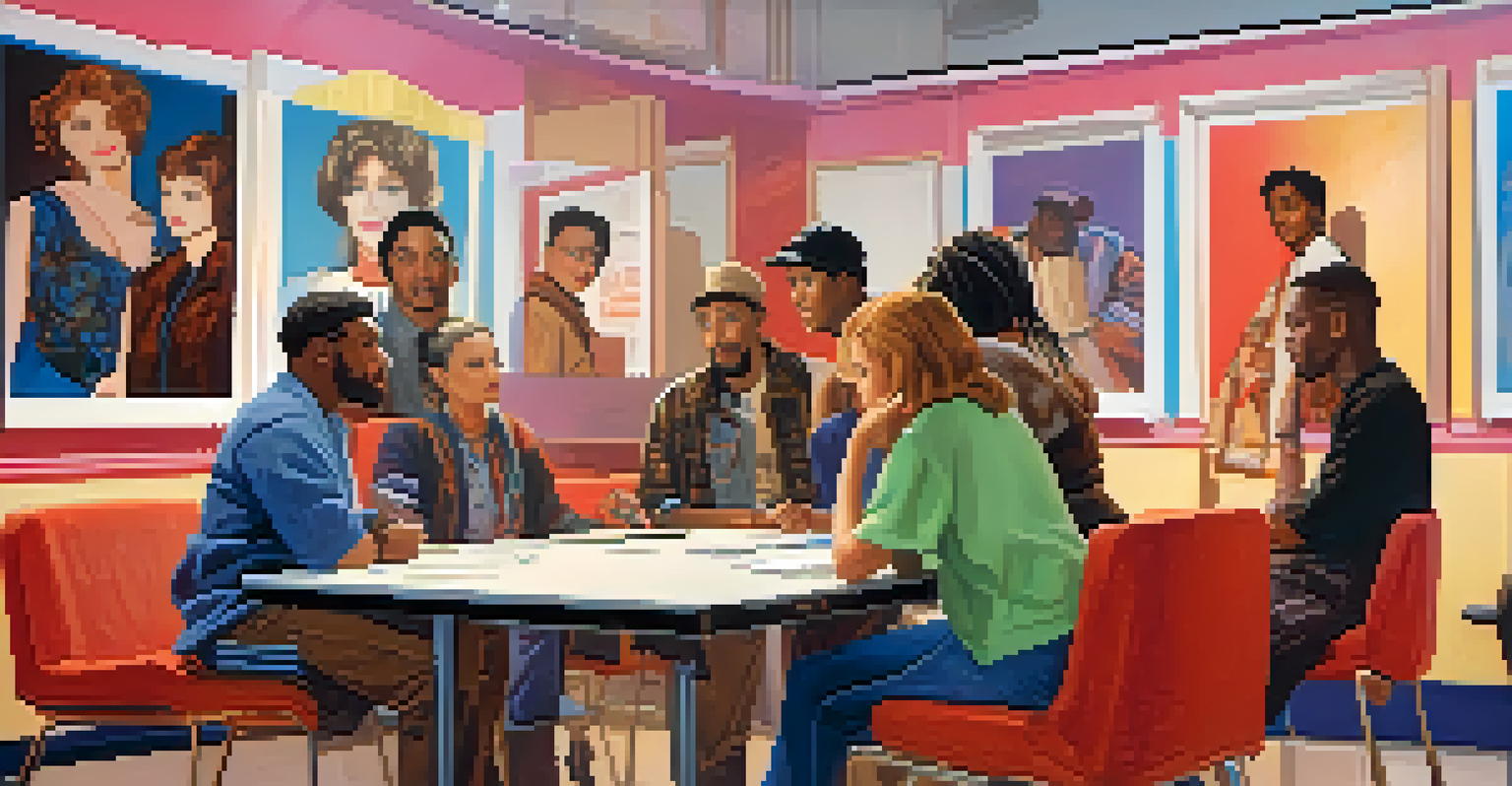The Casting Process: A Behind-the-Scenes Look at Hollywood

Understanding the Basics of the Casting Process
The casting process is a crucial step in filmmaking, determining which actors will bring characters to life. It begins with the creation of a casting brief that outlines the desired traits and skills for each role. This document serves as a roadmap for casting directors and helps align artistic visions with practical needs.
Casting is a creative and collaborative process that shapes the future of storytelling.
Casting directors play a pivotal role in this process, often collaborating closely with producers and directors. They sift through countless submissions, audition tapes, and resumes to find the right fit. This meticulous selection process ensures that only the most suitable candidates are considered for auditions.
Ultimately, the casting process is about finding the perfect match between actor and character. It's not just about talent; it's about chemistry, presence, and how well an actor embodies the role. This foundational step sets the stage for the entire production.
The Role of Casting Directors in Hollywood
Casting directors are the unsung heroes of the film industry, often working behind the scenes to shape the final cast. They possess a keen eye for talent and an understanding of what directors are looking for. Their expertise helps streamline the casting process, ensuring that every audition is productive and focused.

In addition to selecting actors, casting directors also conduct auditions and callbacks. They create an environment where actors can perform their best, often providing valuable feedback throughout the process. This guidance can significantly impact an actor's performance and confidence.
Casting is Key to Filmmaking
The casting process is essential in aligning actors with characters, setting the foundation for the entire production.
Moreover, casting directors often have extensive networks within the industry. Their relationships with agents, managers, and talent can influence decisions, making them crucial players in the overall success of a film. Their role extends beyond just filling roles; it’s about building a cohesive team.
Auditioning: The Actor’s Perspective
For actors, auditions can be a nerve-wracking experience. The pressure to impress casting directors and secure a role can be immense. However, auditions are also opportunities for actors to showcase their skills and creativity, allowing them to interpret characters in unique ways.
Diversity is not a set-aside program; it’s a strategy that enhances storytelling and strengthens the industry.
Actors often prepare extensively for auditions, studying scripts, crafting their performances, and even working with coaches. This preparation is essential, as casting directors look for authenticity and emotional range. A stellar audition can leave a lasting impression, increasing an actor's chances of landing a role.
It's important to remember that not every audition leads to success; rejection is a common part of an actor's journey. However, each experience contributes to their growth and resilience in the industry. Many actors view auditions as a chance to connect with their craft rather than just a means to an end.
The Callbacks: What Happens Next?
After auditions, the casting team narrows down their choices and invites selected actors to callbacks. This stage is often more intense, as actors are asked to perform specific scenes or read with other potential cast members. Callbacks help determine chemistry and suitability for the role.
During callbacks, directors may provide direction to see how well actors can adapt their performances. This interaction can be enlightening, as it reveals an actor's ability to take feedback and collaborate with others. It's a crucial step in assessing whether an actor can fit seamlessly into a larger ensemble.
Diversity Enhances Storytelling
Embracing diversity in casting enriches narratives by reflecting various perspectives and making stories more relatable.
Ultimately, callbacks aim to finalize casting decisions. The casting team deliberates, weighing each actor's performance and potential contribution to the film. This collaborative decision-making process is vital to ensure that the cast aligns with the vision of the project.
Diversity and Inclusion in Casting
In recent years, the industry has recognized the importance of diversity and inclusion in casting. This shift acknowledges that stories are richer when told from various perspectives. Casting directors are increasingly tasked with finding actors who reflect the diversity of society.
Inclusive casting not only enhances storytelling but also resonates with audiences. It allows for a broader range of experiences and voices to be represented on screen. This change is crucial in fostering a more equitable industry.
However, achieving true diversity in casting requires ongoing effort and commitment. It involves challenging traditional norms and actively seeking out talent from underrepresented groups. The industry is gradually evolving, and casting processes are adapting to reflect these values.
The Impact of Technology on Casting
Technology has revolutionized the casting process in recent years, making it more efficient and accessible. Online platforms allow actors to submit auditions from anywhere, broadening the talent pool for casting directors. This shift has democratized opportunities, allowing lesser-known actors to showcase their skills.
In addition to online submissions, casting directors can utilize social media to discover emerging talent. Platforms like Instagram and TikTok have become breeding grounds for actors seeking recognition. This trend highlights the evolving landscape of talent discovery in Hollywood.
Tech Revolutionizes Auditions
Technology has transformed casting by making auditions more accessible and allowing casting directors to discover talent beyond traditional methods.
However, while technology offers new avenues for casting, it also presents challenges. With so many submissions, casting directors must sift through vast amounts of content to find the right fit. Balancing efficiency with quality remains a key concern in the digital age.
Final Selections: Making the Cut
Once all auditions and callbacks are completed, casting directors present their recommendations to producers and directors. This stage involves thorough discussions about each actor's strengths and how they align with the project's vision. It’s a collaborative effort where everyone’s input counts.
The final selections are often influenced by various factors, including the actor's previous work, their chemistry with the cast, and logistical considerations like availability. This decision-making process can be both exciting and stressful, as it ultimately shapes the film's cast.

Once the casting decisions are made, the excitement begins! Actors receive the good news, and the production team can move forward with rehearsals and filming. This moment is a culmination of hard work and passion, marking the beginning of a new creative journey.